Introduction:This information, and the photos, come from an article in the January 2003 issue of "Rustlings" the monthly newsletter put out by the BCCA's Rusty Bunch. The article was written by Matt M. with help from Charlie B. (who owns the cans photographed) Steve P., Dave B., and Bob F. The first person references in the piece below are by Matt, the original author! This is the type of research that makes this hobby fun and I thank Matt for letting me post it for others to enjoy. |
Most collectors keep a few Ballantine's without giving much thought to the variations. But besides being handsome cans and having cultural references on the labels, it is perhaps the one brand sold in New England that one can afford to collect on grade. The variations are more interesting than finicky color shades and can companies, and there aren't any that are ungettable. All in all, it’s a terrific subspecialty to collect!
The OI's
Two of the three OI's (Opening Instruction) pictured below are not shown in the USBC (United States Beer Cans). Where cans are stacked in the photos, Ales are always on the top row and Beer on the bottom. One collector reported that these all come with variations in the copper vs. orange-gold color, but keeping track of that would make me insane. Dave B. reports a Beer OI with the older trademark text but the newer color. Hard to say if it’s fade or not.
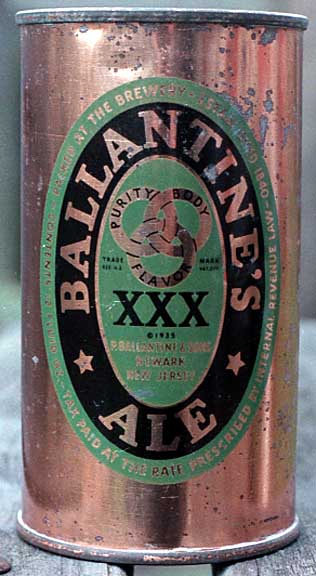 |
| The first two beer OI’s are shown together (photo 1, backs are photos 2 and 3). Note the difference in the color of the ring and the trademark text on the right-hand can, the earlier one. The #2 beer shows a NY distributor at W. 16th St. NYC. These are both unpictured in the USBC: the beer OI in USBC, 33-21, is actually #3 and has the NY distributor at Long Island City. The black letters “export” are solid black in the #2 OI, and then black edged with gold in the #3 OI. |
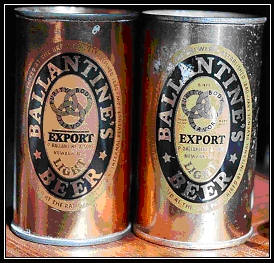 |
| Photo 1: The first two Beer OI's. Differences are in the color and the trademark info around the rings, as well as the instructions themselves |
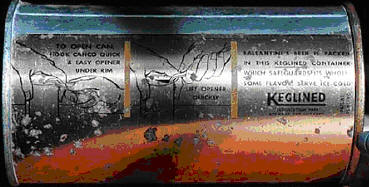 |
| Photo 2: Back of the first Beer OI, with no NY distributor |
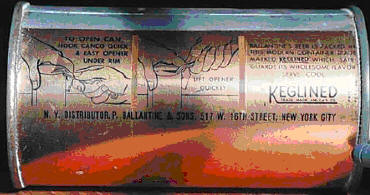 |
| Photo 3: Back of the second Beer OI WITH the NY distributor. |
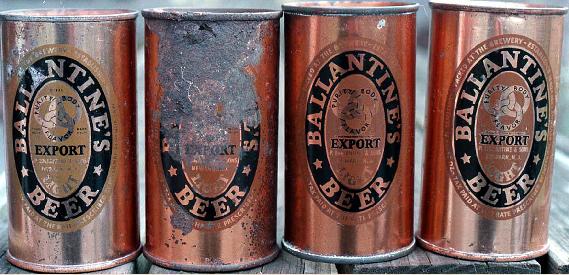 |
| Photo 4: The front of the first four Beer OI's |
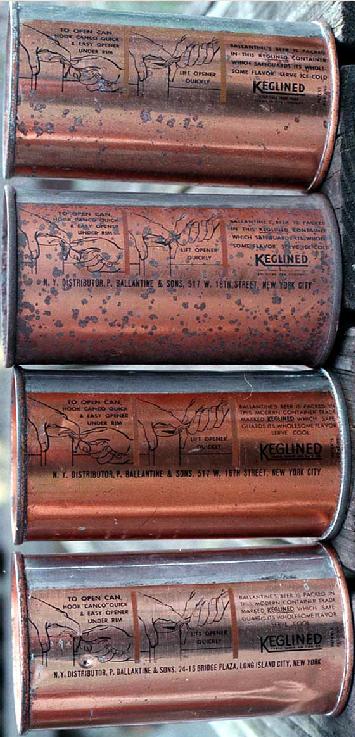 |
| Photo 5: The back of the first four beer OI's Note the differences in the distributor addresses. |
 |
Photo 6 : The first ale OI The first Ale OI, USBC 33-1, has the XXX in solid black with no NY distributor listed on the back, and a couple of other small differences from the next can. (Photos 6, 7) There may be a second Ale OI, one that shows a NY distributor at W. 16th St. NYC. However, we can not confirm the existence of this this second Ale OI can as yet. |
 |
| Photo 7: Back of the first ale OI |
| Photos 8 and 9 show the third Ale (USBC 33-2) and the third Beer OI’s. These are the most common of the OI's and all have the Long Island City address. Yes, that’s the Bock OI and it matches the cans next to it as best as I can tell. No word on if there are any earlier Bocks as yet. |
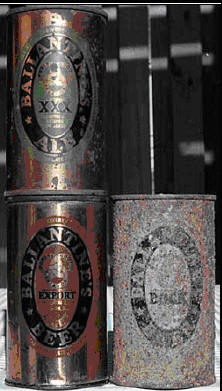 |
| Photo 8: The later OI's, far more common than the earlier ones
|
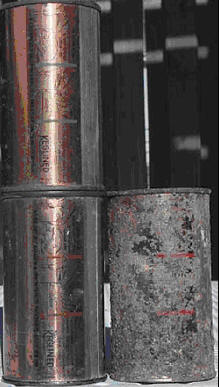 |
| Photo 9: Backs of the later OI cans. NY Distributor is the Long Island City address. |
The Product Lists
Chronologically, the first is the one with the Keglined logo at the bottom of the list. This can has a flat top lid unlike the others, even though all are Others Pending (1938) with the sales office at Long Island City. Presumably the plain list is second, followed by the one with the UBIF seal since the seal shows up on most later cans. Note that this is the United Brewers Industrial Foundation logo, not the USBF (United States Brewers Foundation) which shows up on the post-back panel IRTP and all later cans. (BTW, no one's seen USBC 33-31; it isn't really a one faced can.) USBC claims to not show can company or other minor differences, yet it shows a version of the ale product list different from the beer and bock. I guess they were too sick of looking at Ballantine by the end of the project to bother with showing matching cans, but all these variations are known and listed in the Wolpe catalog. Below I have photos of the variations, plus close-ups of the relevant logos we refer to in this article.
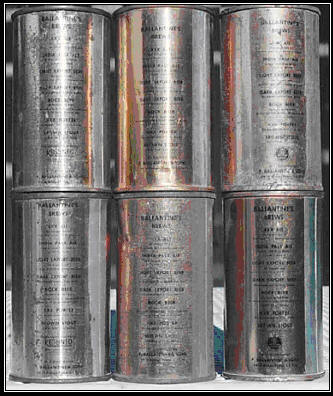 |
Photo 10: The 3 variations of the products list. From left to right... 1. Keglined Logo at bottom of list. 2. No Keglined Logo. 3. UBIF Logo at bottom of list. |
The Three Different Logos That May Appear.
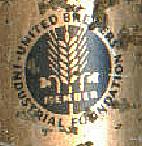 Photo 11: UBIF Symbol |
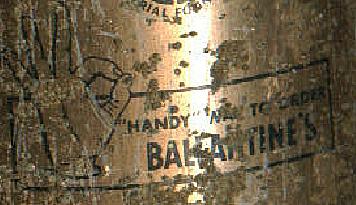 Photo 12: "Handy Way to Order" Panel. |
The Just for Funs
These come with the UBIF logo or with the handy logo. The Beer with the handy logo may be the granddaddy of all these cans. My shelfer came from Nan W’s digs after the Syracuse Canvention but the Ballantine fanatics I know don’t have it! I’ve only seen one other, an indoor one in a photo of a fellow RBers collection. I had dumped the Ale/just for fun/handy once. All four variations are considered tough among all the back panels. I don’t know where in the chronology these fall. Perhaps a radio buff could date them by the celebrities listed on the can? My guess is 1938 since a trademark is listed on the handy logo like the 1938 Handy Can, but unlike the handy logo on the 1939 World's Fair can.
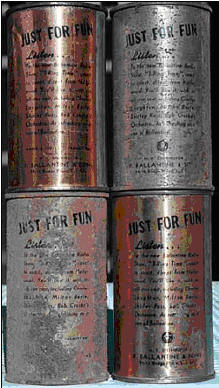 |
Photo 14: The 2 variations of Just for Fun. 1. (left) Has the "Handy Logo" near the bottom, a hand making the "OK" sign. It is hard to see in this picture. 2. (right) UBIF symbol is present instead of the "Handy" |
The "Handy" Can, the "New York World's Fair", The "1840-1940", and the "Save Money" Cans
Each comes in Ale and Beer with no basic variations, photo #15. The Handy can has a 1938 trademark on the handy logo, and the World's Fair and 1840-1940 cans are self–dating for 1939 and 1940. No dates are on the Save Money Buy in Bulk. It lacks the UBIF seal which might make it 1940-42, but the print size of the NY Distributor information matches the earlier Just for Fun so the evidence is mixed.
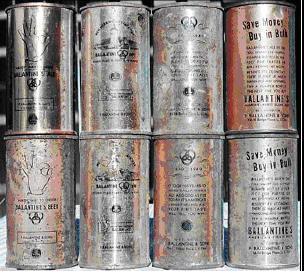 |
Photo 15: The four other back panels with no variations. |
